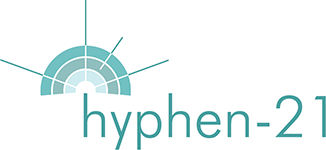There are many inspirations behind this web-site and the work it reflects.
The image for the charity’s title comes from the Book “I and Thou” by a theologian Martin Buber. His book sets out a dichotomy that is fundamental and ever more urgently relevant. We are overwhelmed in I-It. We are starved of I-Thou. The extent to which we continue to fail to speak and act I-Thou with sufficient skill and to sufficient effect, will be the speed at which we now destroy ourselves and the world we were given. We do not deserve another. Buber heads the list.
I should mention a much later book here which provides another dichotomy equally telling, elemental and momentous in its implications: “The Master and his Emissary : The Divided Brain and the Making of the Western World” by the psychiatrist Iain McGilchrist. This book too has much to say to the position taken by this charity, and to the situation that brought it about.
Essentially, the book begins as an authoritative and scientific study of the two hemispheres of the human brain. And McGilchrist finds that they are not two equal and opposite halves of a whole and they are not complementary. On the contrary, in each one of us, they are in tension and at odds, with the gap between them growing wider, generation by generation. The emissary is the left hand hemisphere, prevailingly the more analytical, the side that tends to assess from measured detachment but also from fearfulness, rather than from experience in felt immediacy.
The emissary’s role in Creation was to function largely at the master’s service, measuring for danger, but somewhere in that left hemisphere – almost by definition – is a conviction that measuring and fear is all there is and therefore the life and experience of right hand side of the brain, the master, is dispensable. And the society we make at any given time will inevitably reflect which hemisphere has the upper hand as the struggle continues through the generations. But the master must maintain mastery and the emissary succumb and retreat into his true role. Otherwise we are all done for. And that includes the emissary, of course. But the emissary does not know that.
Here is a poem which tries to draw out the differences and the struggle. I call the emissary “Hard Drive.” I call the master “Cat.” In our generation, which of the hemispheres is winning ?
The late Phyllida Parsloe, for years the Director of Bristol University’s Institute of Social Studies, and the late Rev. David Jenkins, the erstwhile Bishop of Durham, both had much to do with the creation of this charity.
With special reference to the project now called “Poems for the wall,” once called “Poems for the Waiting Room,” later called “Poems for…”, I want to name the following as having been of special help in moving things along : Paul Murdoch, Chris Meade, Alison Combes, Gary Mckeone, David Hart, Malcolm Rigler, Debjani Chatterjee, Susan Elizabeth, Andrew Motion, Stephen Watts, Abigail Cambell, Sue Stewart, Fiona Sampson, Denis Macshane, Peter Carter, Nigel Crisp, Jane Riley, Barry Mussenden, Charles Beckett, David Morris and Nick McDowell. The list could and probably should be longer. The story of the project includes a large number of encounters that have hugely enlarged and enriched my life.
As far as my support and counsel for the work of Hyphen-21 is concerned, I want to name in particular Mary Young, Graham Thorp, Jane Thorp, Pat Pegg-Jones, Caite Doyle, Mevlut Ceylan, David Morris, Lynette Cawthra, Baffour Ababio, Victoria Field, Victoria Hume, Stephanie Sexton, John Griffiths, Fiona Totty, Nick Viney, Peter Smith, Nicola Knoop, and Nikolas and Joseph Wolf. I am again leaving several names out here, but the people mentioned are those who have been able to give most time, the inner core.
The list of “Hyphen Projects” elsewhere on this website includes the title of a long poem I wrote some years ago – “A Light Summer Dying.” It has been read to trainee nurses, social workers and hospice workers, but I took some persuasion before agreeing to include it here. Having done so, I should mention that the poets Moniza Alvi and Caroline Carver gave me great encouragement with the poem, as well as good practical advice on how to finish it to best effect. But the name of my friend Mary Young belongs under this heading too. She helped me believe in the poem in the first place.
Finally, to my son Joe, thank you for the patience, the time, the flair, the competence, and the loving kindness which you have offered me and these web-sites old and new.
Poems for…the wall
“Poems for…the wall is an inspired scheme …… I’ve been delighted to be a part of it.” Andrew Motion, UK Poet Laureate, 1999-2009.
Read more about Poems for…the wall here
Code of Conduct for ward rounds
“The Department of Health welcome[s]… the Code of Professional Conduct for Ward Rounds and Similar Meetings. [This] is an example of good practice it would want to support…” Julie Nichols, NIMHE
The Code is here
Service User involvement in staff recruitment
The Commission for Health Improvement (CHI) found Hyphen-21’s model of a separate recruitment panel of service users “an example of notable practice…worthy of sharing..across the NHS.”
Click here for an article in the magazine “Openmind” which describes the model.
Comments on Hyphen-21
“We feel that Hyphen-21 is doing some very important work designed to connect people to people, and people to community – their work on a code of good practice for ward rounds and their “Poems for the Waiting Room” project are particularly potent examples.” Consumer Consultancy (Brighton)
“ I initially accessed your site as I was interested in your Poems for the Waiting Room project. However I am now really impressed by the other projects you have set up…I would like to express my support for your charity.” Sheena MacKenzie, Turning Point Worcester Druglink
